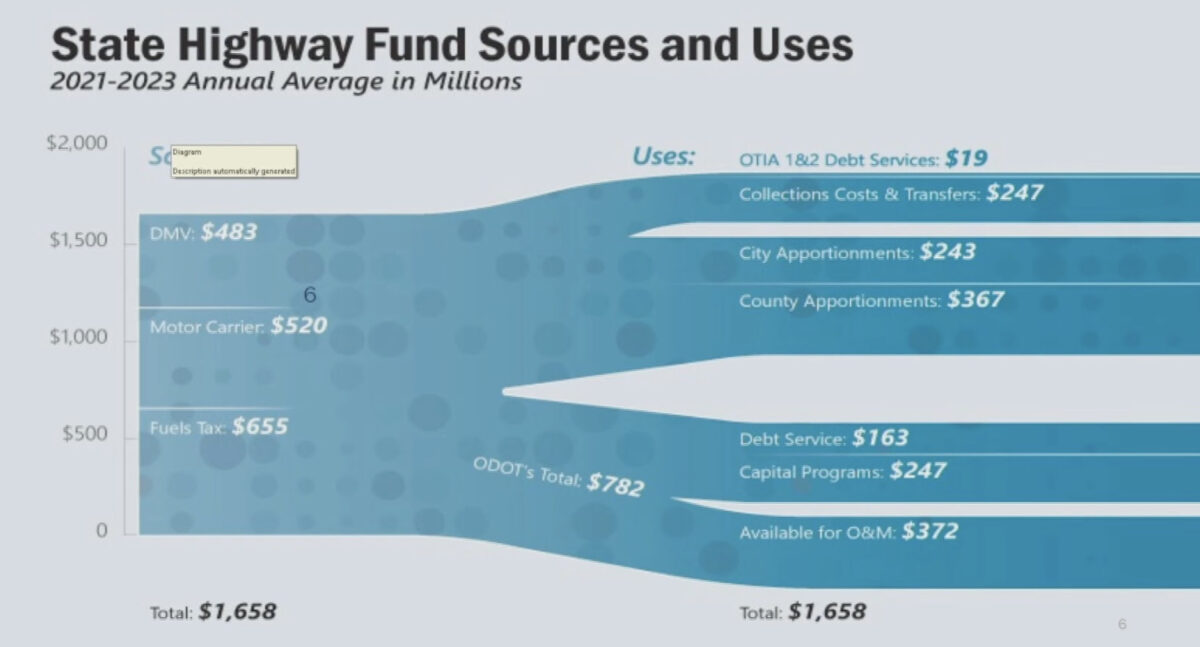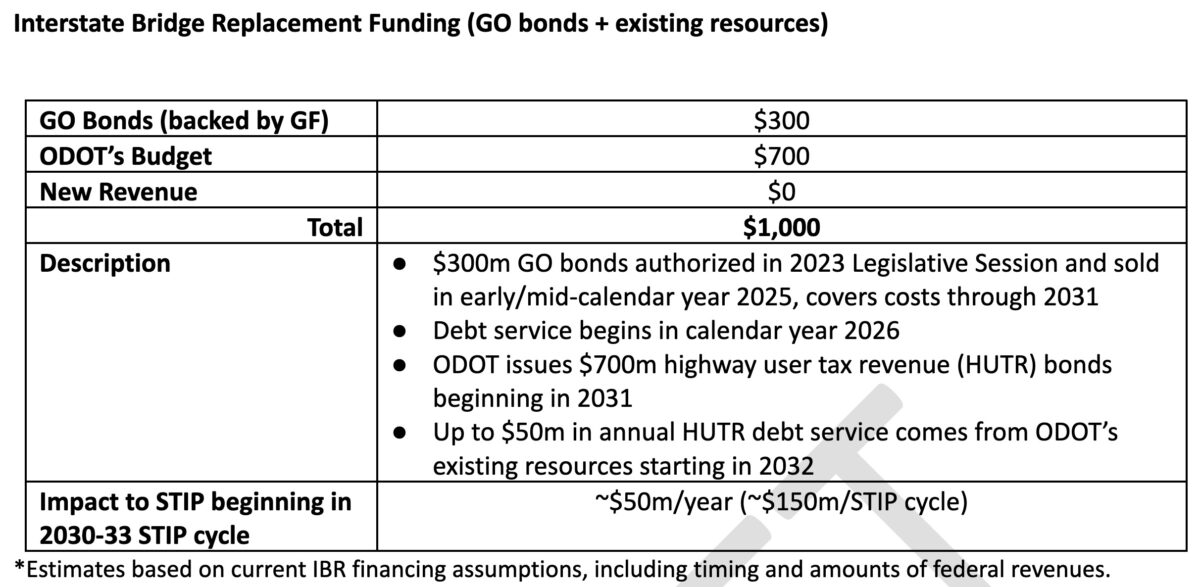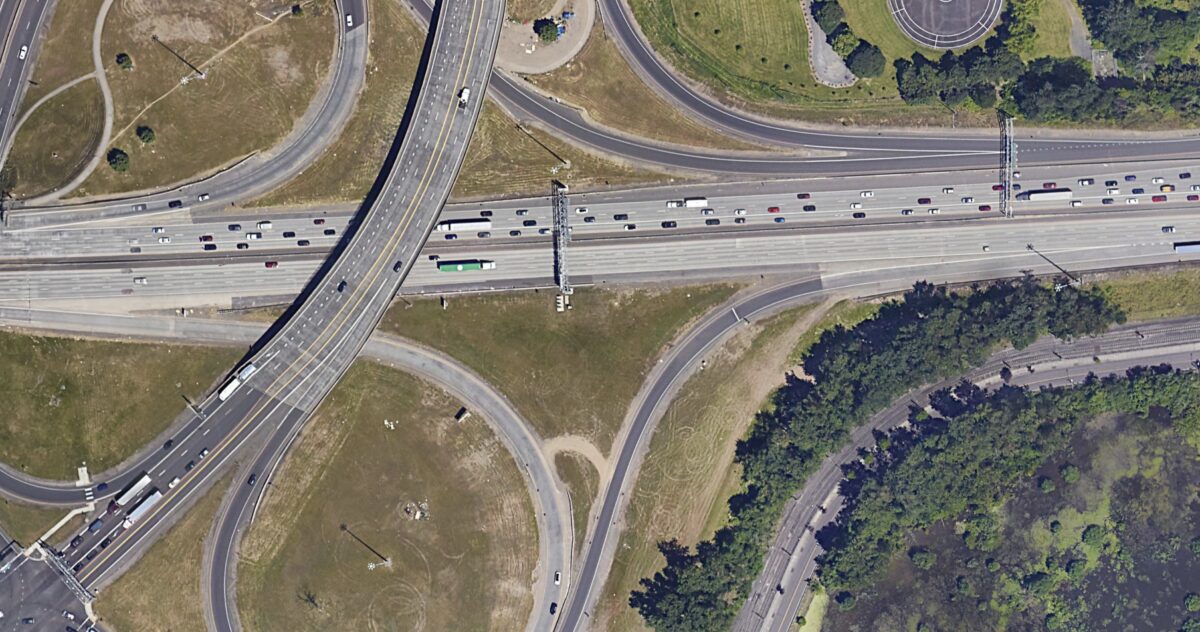How will Oregon pay for a major expansion of the I-5 freeway between Portland and Vancouver (also known as the Interstate Bridge Replacement Program)? We’ve known for a while that the magic number for Oregon’s share would be $1 billion — that’s the amount the state of Washington has already pledged, and with a project estimated to cost as much as $7.5 billion, the federal government needs to see cooperation and a local match before they’re willing to award coveted infrastructure grants.
With the clock ticking and all eyes on Oregon, we finally know how our state plans to come up with the money: they want to borrow it.
Last Wednesday the Oregon Legislature’s Joint Committee on Transportation revealed a plan to bond against $700 million in Oregon Department of Transportation state highway fund tax revenue (which comes from gas taxes, vehicle registration fees, and fees from freight trucks). The remaining $300 million would come from bond sales from the state’s general fund. The state would be on the hook to pay back these debts beginning in 2026.


The payback would hit ODOT funding in particular starting in 2032, when they estimate it would carve $50 million per year out of the Statewide Transportation Improvement Program. To put that debt into perspective, it’s almost the same amount ODOT spends on public transit statewide each year ($60 million). It would also add to ODOT’s already heavy debt load. Of the $782 million ODOT receives from the state highway fund each year, just over 20% of it — $163 million — goes directly to debt service.
Another element of the funding plan is that lawmakers would set a hard cap for the total cost of the project so that it may not exceed $6.3 billion. It’s worth noting that when ODOT released their updated cost estimate back in December, they gave a range of $5 to 7.5 billion and settled on $6 billion as the most likely number; so while that cap is right in line with ODOT’s own estimates, it at least puts up some guardrails about runaway costs and it could be seen as a small overture from lawmakers that they don’t trust ODOT with a blank check.
The funding plan reveals desperation from lawmakers as tensions continue to rise about how ODOT will stay solvent in light of an ever-expanding portfolio of megaprojects and an ever-shrinking pot of money to pay for them. ODOT is obligated by the legislature start a tolling program to help pay for projects like this one, but that process will be anything but easy as they navigate skeptics across the public and political spectrum.
The Joint Committee on Transportation will have to take up a bill this session to initiate their plan. According to stories from The Oregonian and OPB last week, that will happen in April. If it all goes according to plan, ODOT would issue the bonds in 2025 — the same year the Oregon Legislature plans to pass its next large transportation funding package.
While this funding plan hasn’t been scheduled for a public hearing yet, it will very likely be discussed tomorrow (Tuesday, March 28th) when ODOT leaders return to the Joint Committee on Transportation to brief lawmakers on their budget. The informational session is being continued from March 7th when lawmakers grilled ODOT about their spending priorities and left several questions unanswered.
Speaking of unanswered questions, the I-5 expansion and bridge replacement project has been dogged by them. Earlier this month the U.S. Coast Guard forced the project team to analyze a lift-span design, a move the project team hoped to avoid and that could sow further doubt and delays.
Adding to the cauldron of concern, lawmakers will also soon hear from activists who plan to descend on the capitol building on April 13th for what’s being billed as the Transportation Future Day of Action. The event is co-organized by the Just Crossing Alliance and is part of the “Right Size, Right Now!” campaign that seeks to convince legislators to re-think their approach to the IBRP project.
“We can’t let this behemoth bankrupt our state and our children’s climate future,” reads a statement about the event. “The current design is oversized and will suck up our state’s transportation funds for the next couple of decades and leave us without dollars to fill potholes, invest in safe streets and routes to school, or prioritize active transportation and public transportation. The current design is a five-mile freeway expansion that far outreaches the need for a safe, earthquake proof bridge and will increase traffic and greenhouse gas emissions.”




